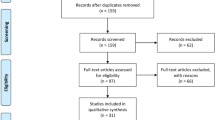Abstract
Objectives
Substantia nigra hyperechogenicity (SN+) detected by transcranial ultrasound (TUS) is useful for Parkinson’s disease (PD) diagnosis. Approximately 15% false negative results of unknown significance are reported. However, most TUS studies are transversal, and diagnosis of PD may change during follow-up.
Methods
Analysis of our prospective registry of TUS in clinical practice, selecting patients with sufficient bone window, to whom TUS was performed because of suspected PD, and a minimum of 3-year follow-up. Subjects were classified regarding SN echogenicity (SN+/SN−).
Results
172 patients (122 SN+, 50 SN−), mean age 71 years (25–90), were included. At the end of follow-up, PD diagnosis was retained by 91% SN+ vs. 54% SN− subjects (p < 0.0001), while final diagnosis of atypical parkinsonism (3%SN+ vs. 16%SN−, p:0.0059) was more frequent in SN−. Dopaminergic therapy response was associated with SN+ (88% SN+ vs. 50% SN−, p < 0.0001), as were abnormal DaTSCANs (90%SN+ vs. 56%SN−, p 0.0027). SN echogenicity had 80% sensitivity and 68% specificity for PD diagnosis, while SPECT had 91% and 73%, respectively. SN+ was the only baseline predictor of keeping PD diagnosis at the end of follow-up, with an odds ratio of 12 (95% CI 3–42) (p < 0.001).
Conclusions
In our sample of patients with suspected PD, SN hyperechogenicity predicted PD diagnosis in the long term with a high odds ratio. Conversely, a baseline normal SN echogenicity was associated with a poorer response to PD therapy and change to a different diagnosis from PD. Normal SN appears to be a caveat for clinicians to check for atypical parkinsonism features during follow-up.


Similar content being viewed by others
References
Berardelli A, Wenning GK, Antonini A, Berg D, Bloem BR, Bonifati V, Brooks D, Burn DJ, Colosimo C, Fanciulli A, Ferreira J, Gasser T, Grandas F, Kanovsky P, Kostic V, Kulisevsky J, Oertel W, Poewe W, Reese JP, Relja M, Ruzicka E, Schrag A, Seppi K, Taba P, Vidailhet M (2013) EFNS/MDS-ES recommendations for the diagnosis of Parkinson’s disease. Eur J Neurol 20:16–34. https://doi.org/10.1111/ene.12022
Jankovic J, Rajput AH, Mcdermott MP, Perl DP (2000) The evolution of diagnosis in early Parkinson disease. Parkinson Study Group. Arch Neurol 57:369–372. https://doi.org/10.1001/archneur.57.3.369
Postuma RB, Berg D, Stern M, Poewe W, Olanow CW, Oertel W, Obeso J, Marek K, Litvan I, Lang AE, Halliday G, Goetz CG, Gasser T, Dubois B, Chan P, Bloem BR, Adler CH, Deuschl G (2015) MDS clinical diagnostic criteria for Parkinson’s disease. Mov Disord 30:1591–1601. https://doi.org/10.1002/mds.26424
Suwijn SR, van Boheemen CJ, de Haan RJ, Tissingh G, Booij J, de Bie RM (2015) The diagnostic accuracy of dopamine transporter SPECT imaging to detect nigrostriatal cell loss in patients with Parkinson’s disease or clinically uncertain parkinsonism: a systematic review. EJNMMI Res 5:12. https://doi.org/10.1186/s13550-015-0087-1
Li DH, He YC, Liu J, Chen SD (2016) Diagnostic accuracy of transcranial sonography of the substantia nigra in parkinson’s disease: a systematic review and meta-analysis. Sci Rep 6:20863. https://doi.org/10.1038/srep20863
Berg D, Godau J, Walter U (2008) Transcranial sonography in movement disorders. Lancet Neurol 7:1044–1055. https://doi.org/10.1016/S1474-4422(08)70239-4
Walter U (2013) How to measure substantia nigra hyperechogenicity in Parkinson disease: detailed guide with video. J Ultrasound Med 32:1837–1843. https://doi.org/10.7863/ultra.32.10.1837
Alonso-Cánovas A, López-Sendón JL, Buisán J, deFelipe-Mimbrera A, Guillán M, García-Barragán N, Corral I, Matute-Lozano MC, Masjuan J, Martínez-Castrillo JC, Walter U (2014) Sonography for diagnosis of Parkinson disease-from theory to practice: a study on 300 participants. J Ultrasound Med 33:2069–2074. https://doi.org/10.7863/ultra.33.12.2069
Mehnert S, Reuter I, Schepp K, Maaser P, Stolz E, Kaps M (2010) Transcranial sonography for diagnosis of Parkinson’s disease. BMC Neurol 10:9. https://doi.org/10.1186/1471-2377-10-9
Gaenslen A, Unmuth B, Godau J, Liepelt I, Di Santo A, Schweitzer KJ, Gasser T, Machulla HJ, Reimold M, Marek K, Berg D (2008) The specificity and sensitivity of transcranial ultrasound in the differential diagnosis of Parkinson’s disease: a prospective blinded study. Lancet Neurol 7:417–424. https://doi.org/10.1016/S1474-4422(08)70067-X
Busse K, Heilmann R, Kleinschmidt S, Abu-Mugheisib M, Höppner J, Wunderlich C, Gemende I, Kaulitz L, Wolters A, Benecke R, Walter U (2012) Value of combined midbrain sonography, olfactory and motor function assessment in the differential diagnosis of early Parkinson’s disease. J Neurol Neurosurg Psychiatry 83:441–447. https://doi.org/10.1136/jnnp-2011-301719
Mahlknecht P, Stockner H, Nocker M, Kiechl S, Willeit J, Scherfler C, Sojer M, Gasperi A, Rungger G, Poewe W, Seppi K (2012) A follow-up study of substantia nigra echogenicity in healthy adults. Mov Disord 27:1196–1197. https://doi.org/10.1002/mds.25080
Lerche S, Seppi K, Behnke S, Liepelt-Scarfone I, Godau J, Mahlknecht P, Gaenslen A, Brockmann K, Srulijes K, Huber H, Wurster I, Stockner H, Kiechl S, Willeit J, Gasperi A, Fassbender K, Poewe W, Berg D (2014) Risk factors and prodromal markers and the development of Parkinson’s disease. J Neurol 261:180–187. https://doi.org/10.1007/s00415-013-7171-0
Bouwmans AE, Vlaar AM, Mess WH, Kessels A, Weber WE (2013) Specificity and sensitivity of transcranial sonography of the substantia nigra in the diagnosis of Parkinson’s disease: prospective cohort study in 196 patients. BMJ Open 3(4) https://doi.org/10.1136/bmjopen-2013-002613
Fujita H, Suzuki K, Numao A, Watanabe Y, Uchiyama T, Miyamoto T, Miyamoto M, Hirata K (2016) Usefulness of cardiac MIBG scintigraphy, olfactory testing and substantia nigra hyperechogenicity as additional diagnostic markers for distinguishing between Parkinson’s disease and atypical parkinsonian syndromes. PLoS One 11:e0165869. https://doi.org/10.1371/journal.pone.0165869
Turcano P, Mielke MM, Josephs KA, Bower JH, Parisi JE, Boeve BF, Savica R (2017) Clinicopathologic discrepancies in a population-based incidence study of parkinsonism in olmsted county: 1991–2010. Mov Disord 32:1439–1446
Author information
Authors and Affiliations
Corresponding author
Ethics declarations
Conflicts of interest
The authors declare no conflicts of interest.
Ethical standards
Approval of the institution Ethics Committee was obtained, as it was written informed consent from participants.
Rights and permissions
About this article
Cite this article
Alonso-Canovas, A., Lopez-Sendon Moreno, J., Buisan, J. et al. Does normal substantia nigra echogenicity make a difference in Parkinson’s disease diagnosis? A real clinical practice follow-up study. J Neurol 265, 2363–2369 (2018). https://doi.org/10.1007/s00415-018-9006-5
Received:
Revised:
Accepted:
Published:
Issue Date:
DOI: https://doi.org/10.1007/s00415-018-9006-5




